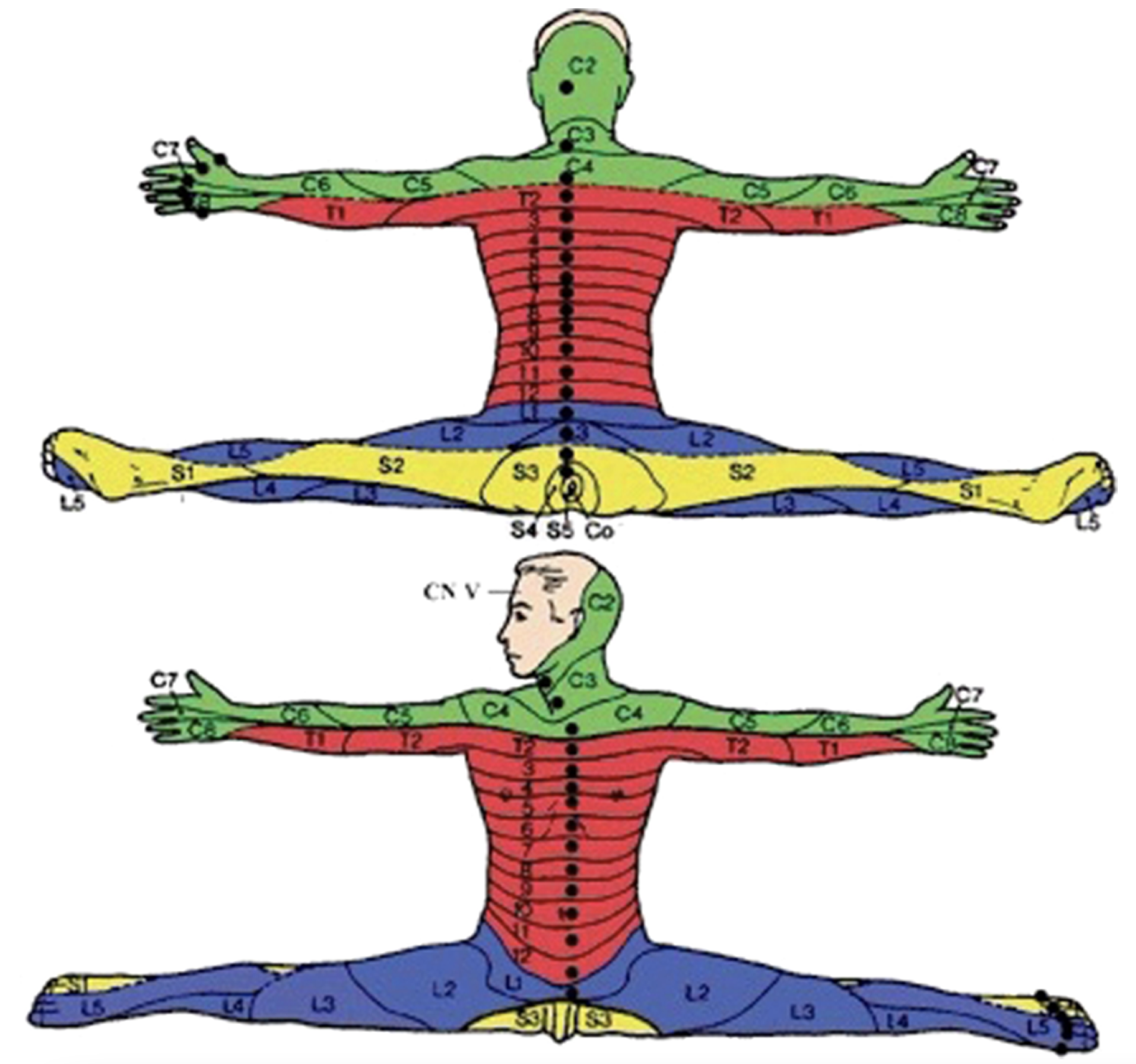

Objectives: The efficiency of local anesthetics (LAs) in the treatment of peripheral pain is commonly attributed to their capacity to block the axon conduction of sensory nerves. LAs even in non-blocking concentration suppress oscillations of the resting membrane potential. Spiking in sensory neurons is triggered by subthreshold membrane potential oscillations (SMPOs), which reach threshold and is maintained by depolarizing impulse after oscillations. The suppression of these oscillations abolishes sustained afferent discharge in sensory nerves without blocking the axon conduction. In a retrospective observational study, we examined if LAs in low concentration and very small quantities could reduce peripheral pain in patients.
Design: During a period of 2 years, a total of 127 consecutive patients, 43 with cervico-brachial, 12 with intercostal and 72 with lumbo-sciatic pain received an identical treatment, which consisted of LAs applied in 4–8 sessions on average to a fixed set of epidermal, epithelial and periosteal locations. The primary outcome was relief of symptoms measured by verbal analog scales at the end of therapy.
Results: At the end of therapy, 53 (41.7%) of all patients (127) had a complete remission (reduction of pain 100%). Twenty-three patients (18.1%) had a partial remission with >90% reduction of pain and 50 patients (39.4%) had a pain reduction of 30%–90%. One patient did not respond.
Conclusion: LAs in low concentration and small quantities proved to be highly efficient in the treatment of peripheral pain. An almost complete remission could be obtained in a majority of patients. Given the extent of pain reduction achieved, the method of application seems to be of major importance.
Keywords: non-blocking local anesthetics, subthreshold membrane potential oscillations, acute chronic peripheral and neuropathic pain, alpha 1-adrenoceptors, complex regional pain syndrome.
Ver artículo completo (FREE PDF)
